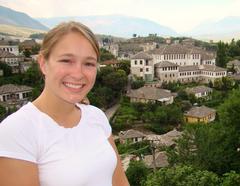Aimee SunnyA “community” can be defined as a social group residing within a specific locality, sharing a common cultural and historical heritage. It could be your hometown neighbors, your classmates, or a sports team. Many undergraduate students leave their foundational communities behind, branching out in pursuit of knowledge and understanding. The universities they attend become new places of residence, new “communities.” Although not everyone at a university shares common cultural or historic heritages, we nevertheless join together as a community committed to learning, service, and bettering ourselves and our world. This becomes our common culture, shared with current, past, and future students, faculty, and alumni. This sharing becomes our historical heritage. At the University of Notre Dame, I have the privilege of being part of such a community. In 1842, Rev. Edward Sorin saw great promise and prosperity in the fields of Indiana, and established a university dedicated to Our Lady. The University’s initial years presented many obstacles. The small, yet faithful community of professors and students suffered through cold winters and illness. During 1855, a particularly trying year, nearly half of the community was taken by cholera. Through necessity and desperation, a new building was constructed to house an infirmary, kitchen, convent, and chapel. Due to lack of funds, this building, designed by Father Sorin himself, was constructed with bricks made by faculty and students from silt at the bottom of the nearby lake. The building survived a devastating fire in 1879 that destroyed the Main Building and much of campus. This “French Quarter” has also had several additions, all before 1885. Today the Brownson Complex, as it is now called, remains largely unchanged and structurally sound. It was listed on the National Register of Historic Places in 1978. It currently houses over twenty different offices and classrooms, and is the oldest building owned by the University of Notre Dame. It is also slated for demolition within the next few years. The University believes that it is too simple and unornamented, and wishes to demolish it and build a more suitable “grand entrance” to the Main Building in its place. Seemingly, the idea of “community” has been long forgotten by the University. The preservation of this complex is not limited to the bricks and mortar, but includes the community of people who labored to build it, and the community of people now benefiting from their dedication. Today, it is easy to forget that the foundations of the University were laid with modest means, with local materials, and in a traditional French vernacular style. This building has great potential as a memorial archive, library, and historical museum, with gathering spaces for students and faculty, and perhaps even a small French bistro. Most importantly, given a specific cultural function, it would remind us to respect our history and community. A price cannot be placed on history that is lost. In this case, desiring a new, grand entryway may come at the cost of losing a community’s cultural and historical heritage. Additional Help and InformationAre you in need of assistance? Please email info@berkeleyprize.org. |
|

